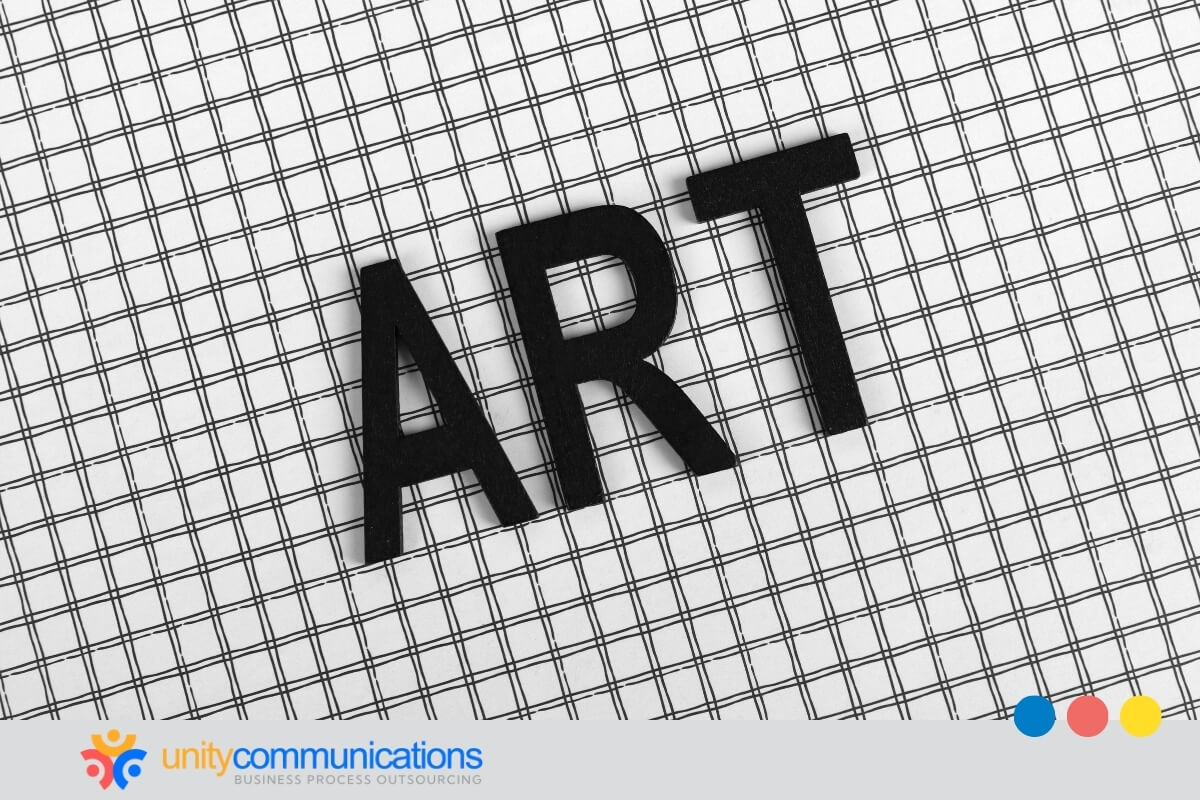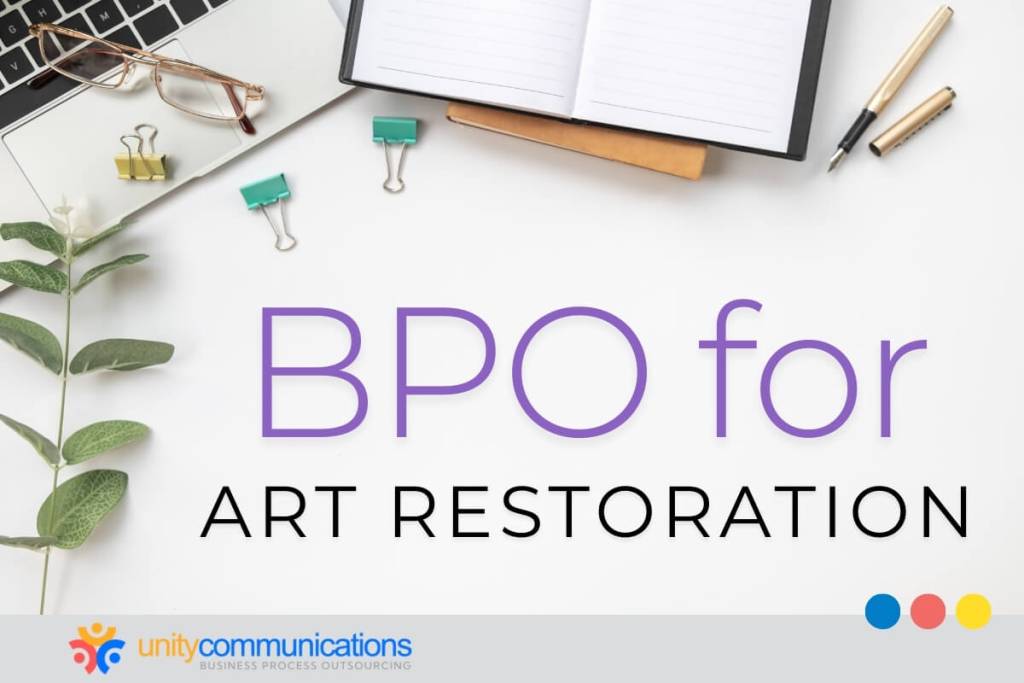Table of Contents
The importance of art conservators continues to increase in today’s culture-conscious world. The delicate and intricate process of art restoration calls for specialized knowledge, meticulous attention to detail, and substantial financial resources.
A collaborative strategy between art conservators and business process outsourcing (BPO) firms appears to be a potent way to guarantee cultural preservation. BPO companies offer logistical expertise, administrative support, and expert teams for complex tasks.
This article discusses how BPO for art restoration helps galleries, museums, and private collectors gain flexibility and efficiency in preserving artistic treasures.
The role of BPO in art restoration

Collectibles, pictures, antiques, artworks, sculptures, and memorabilia are susceptible to harm from fire, water, smoke, and mildew. Restoration is feasible but labor-intensive. The procedure requires trained professionals to remove impurities without sacrificing the object’s integrity.
Reduced discretionary spending and government arts budget cuts have presented significant hurdles for the art restoration services sector. Nevertheless, revenue could reach $538.9 million in 2024, while the market size could expand over the next five years.
What is BPO’s role in art restoration? BPO provides comprehensive support for various aspects of art restoration, from logistics to documentation and licensing. This strategy allows art conservators to focus on their primary preservation tasks by freeing up their time and resources.
Key benefits of BPO for art restoration

BPO provides access to invaluable capabilities in project management, logistics, administrative support, and financial management, significantly boosting the effectiveness and efficiency of conservation projects.
Here are the primary benefits of leveraging BPO for art restoration:
Specialized expertise
BPO in art and creative services provides access to skilled professionals, such as project managers, data analysts, and logistics experts, who can support art restoration’s technical and administrative aspects. Conservators can focus on the intricate and creative aspects of their work.
Streamlined transportation logistics
The logistics of art transportation are complex and delicate. It requires careful handling of artworks, which are extremely sensitive to temperature, humidity, and light fluctuations. Thus, making custom-built crates and implementing specialized care is a must.
Specialized third-party BPO providers can efficiently manage logistics, from packaging and shipping to customs clearance, with the necessary care and precision to ensure each piece arrives safely.
Comprehensive documentation and administrative support
Art restoration projects heavily depend on proper documentation for legal and historical purposes. Accurate logging of each stage of the restoration procedure is necessary to guarantee that previous interventions can be linked to subsequent repairs.
Using their extensive documentation and reporting skills, BPO teams create a comprehensive record of the restoration process, including photographs, condition reports, and treatment notes. Art historians, researchers, and future generations will find this documentation invaluable for research and conservation efforts.
Enhanced project management in art conservation
Restoration projects often involve multiple sites, specialists, and stakeholders, requiring intensive coordination and project management. BPO firms for art restoration can significantly influence this process. They ensure conservation projects are completed on time and within budget, regardless of complexity.
Because every object is unique, treatment costs can vary significantly, but they typically do not fall below $500. For example, restoring a single small painting might cost around $1,000, but more significant or complex pieces can exceed $10,000.
Outsourcing firms are experts at managing restoration costs and coordinating logistics. Experienced BPO project managers create detailed plans to handle large teams, tight deadlines, and complex tasks. They track progress, manage risks, minimize delays, and optimize resources, ensuring that every aspect of the restoration process runs efficiently and smoothly.
Multi-disciplinary collaboration
Preservation projects often require expertise from various disciplines, such as art history, chemistry, and engineering. BPO firms facilitate their integration in art restoration, ensuring schedules align, communication flows freely, and opinions are valued. This multi-disciplinary collaboration develops new solutions, boosts team spirit, and accelerates projects.
Guaranteed compliance with conservation standards
Every art restoration work must adhere to strict international standards to establish trust and guarantee quality. BPO firms with experience in regulatory compliance can help conservation projects consistently meet these guidelines.
Various international conservation guidelines and standards published by different international bodies for the conservation of cultural heritage, regional standardization bodies, and nations include:
- Convention for the Protection of Cultural Property in the Event of Armed Conflict by UNESCO
- International Charter for the Conservation and Restoration of Monuments and Sites (The Venice Charter) by the International Council on Monuments and Sites (ICOMOS)
- International Guidelines for Museum Object Information by the International Council of Museums (ICOM)
- Environmental Guidelines IIC and ICOM-CC Declaration by the International Institute for Conservation of Historic and Artistic Works (IIC)
- Numerous International Organization for Standardization (ISO) cultural heritage standards
Mistakes can ruin high-stakes projects such as art restoration. BPO firms carefully design and implement quality control procedures to maintain the highest restoration standards. They evaluate policies and create undisputable evidence and documentation to safeguard conservators and financial interests.
Comprehensive financial management and fundraising assistance
Art restoration projects often run on private donations, grants, and public funds. BPO companies can offer financial management services, such as reporting, forecasting, and budgeting. They can also help with fundraising initiatives, especially finding possible contributors and drafting proposals.
For instance, Bank of America’s Art Conservation Project has awarded over $20 million in grants to save different artworks, from 20th-century classics to historical sculptures and modern installations. Art restoration projects can have a clear financial roadmap by collaborating with finance specialists, cultivating solid donor relationships, and streamlining budgets.
Scalability for large-scale restoration projects
BPO organizations can provide scalable solutions to manage the workload for extensive restoration projects, such as multiple components or sizable historical locations. BPO firms increase staffing as needed without incurring the long-term hiring expenses that come with growth.
Scalability gives art restoration teams the capacity to manage peak times, support their most ambitious projects, and avoid overtime simultaneously.
Improved public awareness and education
Public awareness contributes to the value of art conservation. Through social media campaigns, exhibitions, and educational seminars, BPO firms assist outreach initiatives to boost knowledge and support for art restoration.
For instance, BPO companies can develop and publish interesting educational content on social media. They can also build partnerships with galleries, artists, and the community. These collaborations raise local awareness, stimulate general public interest, and create new funding opportunities, making cultural heritage preservation a group endeavor.
The bottom line

Collaboration between art conservators and BPO companies is critical to maintaining cultural assets. By embracing innovation and technology, these partnerships enhance restoration projects’ efficacy, cost, and scalability while celebrating and preserving artistic treasures for future generations.
BPO firms help cultural organizations by providing skilled labor, fundraising opportunities, and logistics support. This improves preservation efforts, as art conservators can focus more on saving artworks.
Ready to discuss more? Let’s connect and see how our experts can help elevate your art programs!




